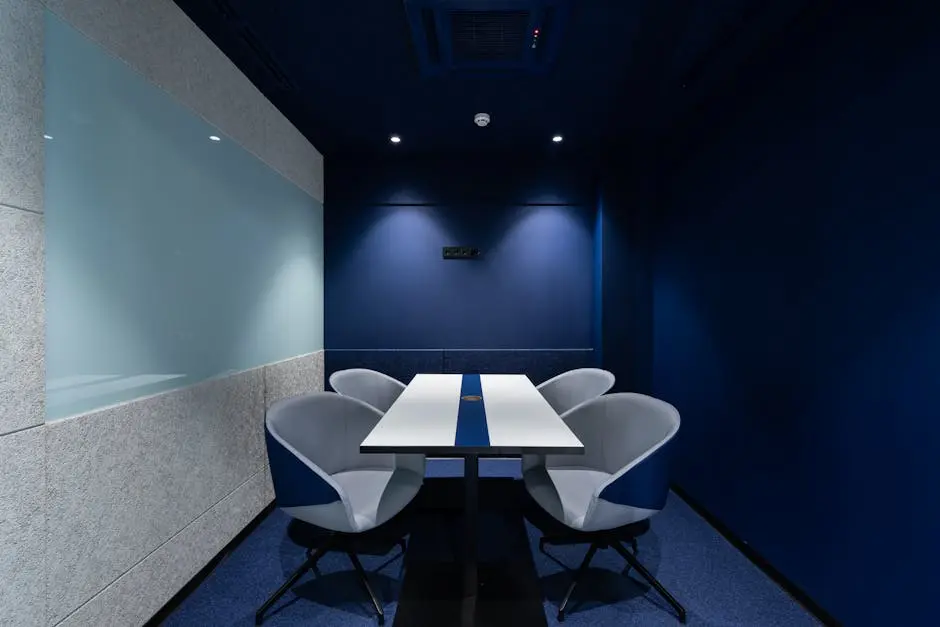Deciding whether your office needs workspace planning software can be a tricky decision. But as workplace dynamics evolve, having the right tools to manage office space efficiently has never been more critical. Let’s dive into the telltale signs that hint it’s time to invest in workspace planning software, ensuring your office keeps up with the demands of modern-day work environments.
1. Overflowing Meeting Rooms
Have you ever found yourself wandering around the office searching for an available meeting room? This not only wastes valuable time but also disrupts productivity. When meeting rooms are constantly overflowing, it’s a glaring sign that your current workspace management system might not be up to par. Workspace planning software can provide real-time visibility into room availability, helping you to schedule and plan meetings more efficiently. This cuts down on frustration and ensures that teams can focus on what truly matters.
It’s about optimizing the resources you have at your disposal. If people are frequently complaining about the lack of available spaces for collaboration, it indicates a misalignment between your workspace’s configuration and your team’s needs. A digital solution enables you to analyze usage patterns and make data-driven decisions on how to reconfigure your office layout to maximize its utility.
2. Spaces Remain Unused
On the flip side of the coin, if you notice certain areas of your office are rarely used, it could mean your space is not being utilized to its full potential. This underutilization is a red flag that you might benefit from workspace planning software. Such tools offer valuable insights into how space is used, allowing you to adapt and repurpose underused areas. Perhaps a seldom-used conference room could be transformed into much-needed quiet working spaces or break-out areas for teams.
3. Flexible Work Arrangements Are Hard to Manage
With the rise of hybrid work models, managing flexible work arrangements has become a Herculean task. If coordinating who works where and when feels like solving a Rubik’s cube, workspace planning software can simplify the puzzle. This technology supports dynamic scheduling, desk bookings, and space optimization, making it easier for everyone to know where they should be and when. It can effortlessly align with your team’s flexible work preferences while ensuring office space is not wasted.
4. Increased Complaints About Workspace
An uptick in complaints from employees about the workspace often points to a deeper issue. If your team is voicing concerns about not having the right spaces for their work or feeling cramped and overcrowded, it’s time to listen. Workspace planning software can gather feedback and usage data, providing actionable insights for creating a more harmonious office environment. It helps in identifying bottlenecks and redesigning spaces that support productivity and employee well-being.
5. Difficulty in Tracking Resource Usage
If you’re struggling to keep tabs on the usage of meeting rooms, workstations, or other resources, you’re likely operating in the dark. Without a clear picture of how your workspace is being utilized, making informed decisions about your office layout or resource allocation is practically impossible. Workspace planning software shines a light on resource usage patterns, enabling you to optimize your office space based on actual need rather than guesswork.
6. Planning For Growth Seems Daunting
If the thought of adding more team members makes you anxious about where they’ll all fit, then it’s a sign you could use some help from workspace planning software. Scaling your team should be exciting, not stressful. The right software can help you visualize potential office layouts, making it easier to accommodate growth. It allows for scenario planning, so you can anticipate changes and adapt your space accordingly without last-minute panic.
7. Inefficient Use of Current Office Space
Feeling like you’re not getting the most out of your office space is a common issue that workspace planning software can address. If walkways are crowded, or if there’s an imbalance in how space is allocated, it’s time to reassess. With the help of software, you can create a layout that better matches your team’s workflow and activities. This not only boosts efficiency but also enhances the overall workplace experience for your employees.
8. Lack of Data-Driven Decision Making
In today’s world, data is king. If your decisions about office space and layout are based more on gut feeling than on solid data, you’re likely not optimizing your workspace. Workspace planning software can provide you with detailed reports and analytics on how your space is used, allowing you to make informed decisions. This can lead to significant improvements in how your office functions, making your workspace work harder for you and your team.

